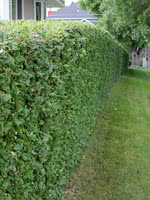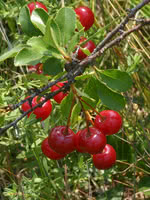Mon-Fri 9am - 5pm Mountain time
Peking Cotoneaster vs Mongolian Cherry
Cotoneaster acutifolia
Prunus fruticosa
NOT AVAILABLE THIS SEASON - MIGHT RETURN
CUSTOM GROW
Peking Cotoneaster is a medium-sized shrub that is well adapted to colder climates. Best suited for use as a hedge, Peking Cotoneaster has dark green foliage that turns a stunning reddish orange in the fall.
Hardy fruit guru, Bernie Nikolai (DBG Fruit Growers), has started to recommend grafting hardy pear varieties to Peking Cotoneaster after his experiences were successful and produced fruit faster than other rootstocks. Remember to leave some nurse limbs if you try this.
Mongolian Cherry is a hardy shrub that is often grown as an ornamental. This plant makes an attractive flowering hedgerow that requires little maintenance. The dark red cherries are tart and desirable for baking, wine-making, and canning. This shrub is popular with wildlife.
Peking Cotoneaster Quick Facts
Mongolian Cherry Quick Facts
In row spacing: 0.3 m (1.0 ft)

